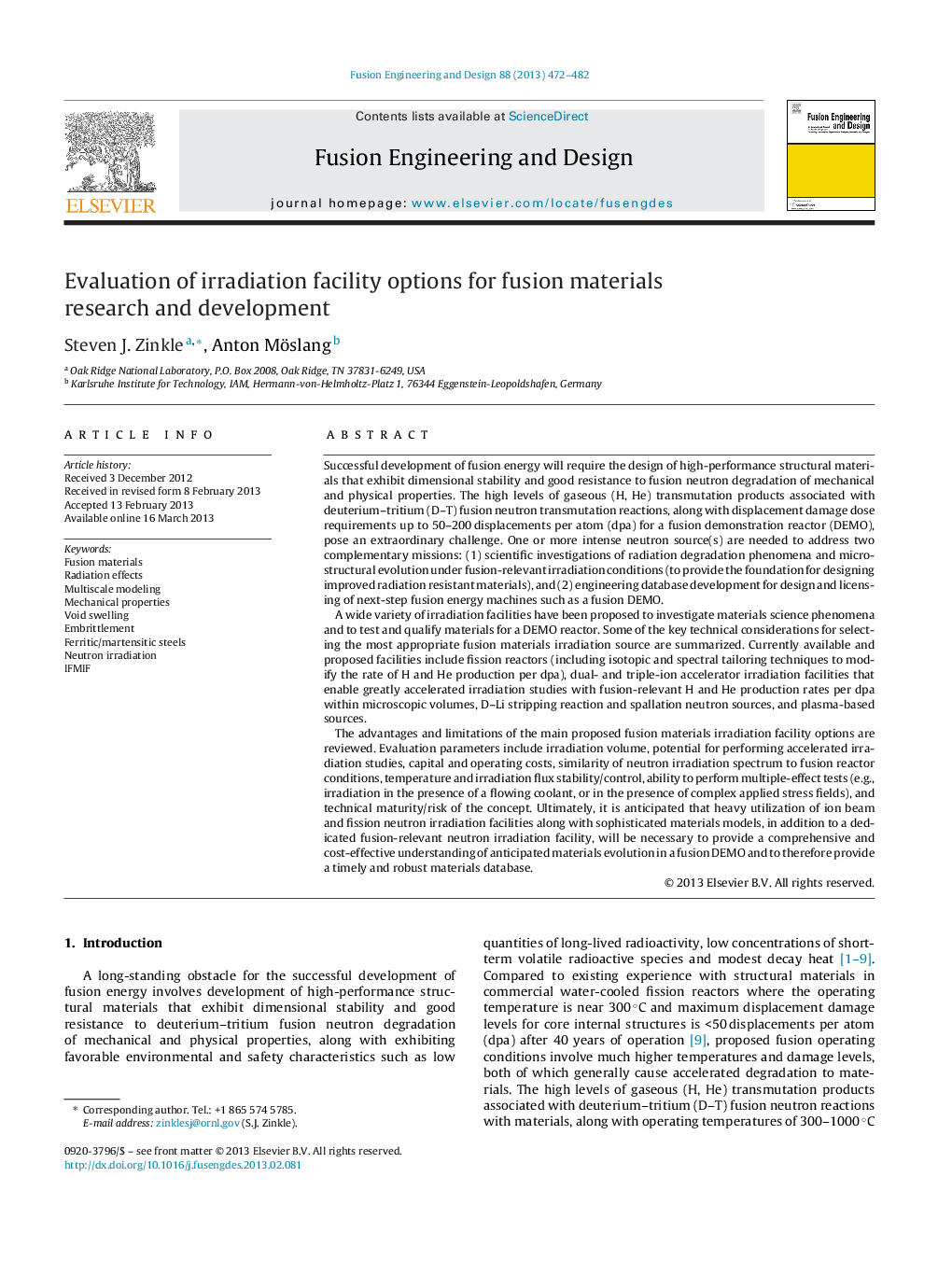| Article ID | Journal | Published Year | Pages | File Type |
|---|---|---|---|---|
| 271702 | Fusion Engineering and Design | 2013 | 11 Pages |
Successful development of fusion energy will require the design of high-performance structural materials that exhibit dimensional stability and good resistance to fusion neutron degradation of mechanical and physical properties. The high levels of gaseous (H, He) transmutation products associated with deuterium–tritium (D–T) fusion neutron transmutation reactions, along with displacement damage dose requirements up to 50–200 displacements per atom (dpa) for a fusion demonstration reactor (DEMO), pose an extraordinary challenge. One or more intense neutron source(s) are needed to address two complementary missions: (1) scientific investigations of radiation degradation phenomena and microstructural evolution under fusion-relevant irradiation conditions (to provide the foundation for designing improved radiation resistant materials), and (2) engineering database development for design and licensing of next-step fusion energy machines such as a fusion DEMO.A wide variety of irradiation facilities have been proposed to investigate materials science phenomena and to test and qualify materials for a DEMO reactor. Some of the key technical considerations for selecting the most appropriate fusion materials irradiation source are summarized. Currently available and proposed facilities include fission reactors (including isotopic and spectral tailoring techniques to modify the rate of H and He production per dpa), dual- and triple-ion accelerator irradiation facilities that enable greatly accelerated irradiation studies with fusion-relevant H and He production rates per dpa within microscopic volumes, D–Li stripping reaction and spallation neutron sources, and plasma-based sources.The advantages and limitations of the main proposed fusion materials irradiation facility options are reviewed. Evaluation parameters include irradiation volume, potential for performing accelerated irradiation studies, capital and operating costs, similarity of neutron irradiation spectrum to fusion reactor conditions, temperature and irradiation flux stability/control, ability to perform multiple-effect tests (e.g., irradiation in the presence of a flowing coolant, or in the presence of complex applied stress fields), and technical maturity/risk of the concept. Ultimately, it is anticipated that heavy utilization of ion beam and fission neutron irradiation facilities along with sophisticated materials models, in addition to a dedicated fusion-relevant neutron irradiation facility, will be necessary to provide a comprehensive and cost-effective understanding of anticipated materials evolution in a fusion DEMO and to therefore provide a timely and robust materials database.
